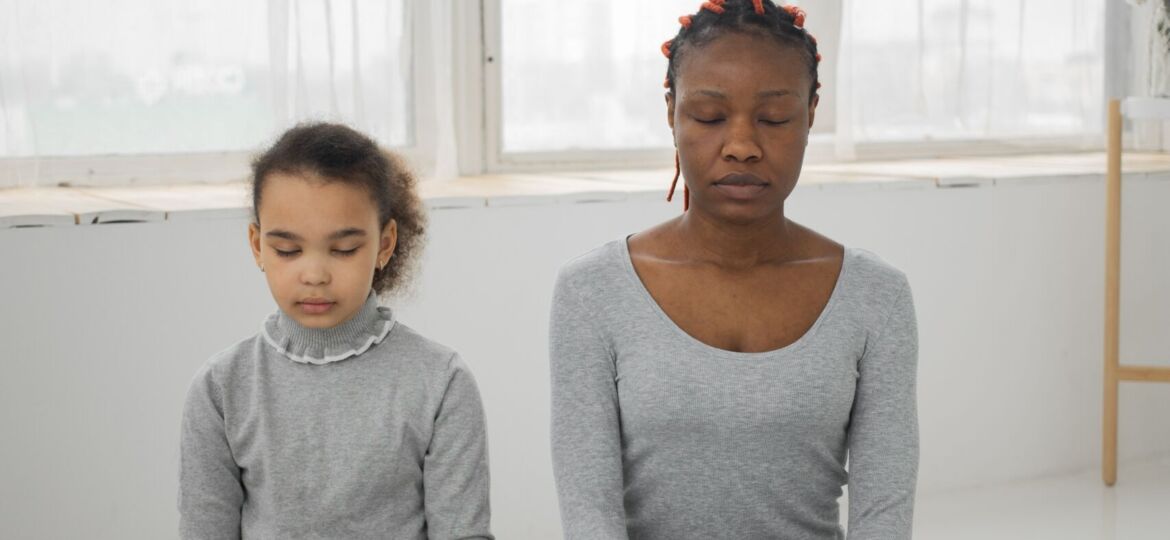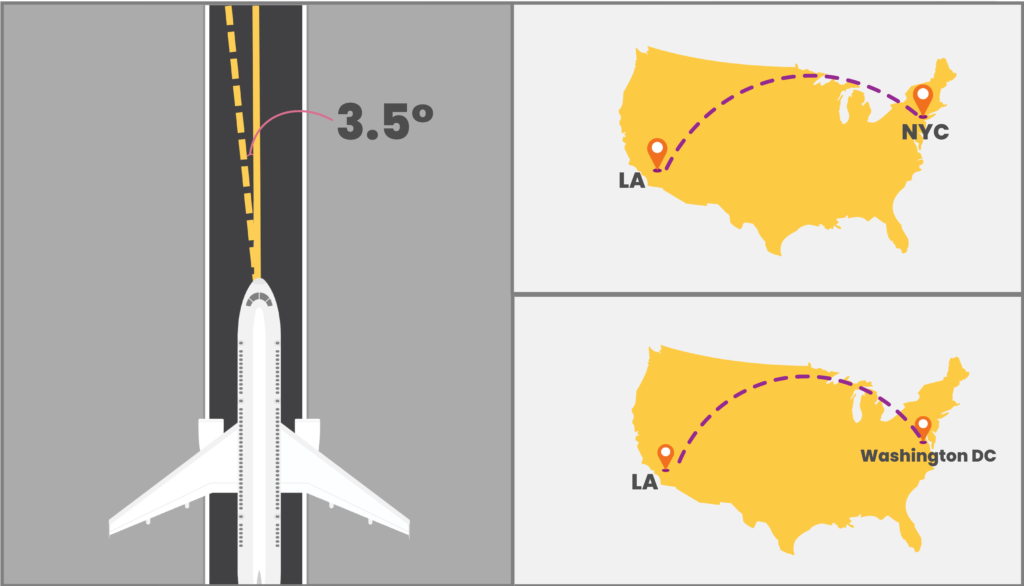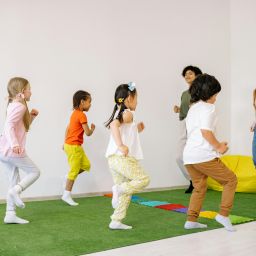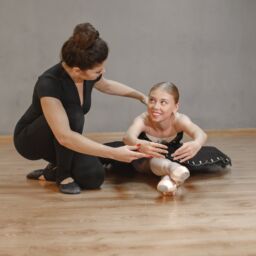
If you’ve read the first blog on our website, you understand our sole focus – empowering you as parents with knowledge and tactics to create optimal First Habits in your children. These habits will not only make your job as a parent easier but equip your children for success in the classroom, the playing field, the recital auditorium and everything in between.
Navigating the Flight Path: The Impact of Small Adjustments in Habits
Just like the heading of a plane, a child’s path can be drastically affected by the smallest adjustments. Picture this: you’re on a flight and the plane’s heading is off by just a few degrees. It will likely not even be noticed in the first fifteen minutes of flight, but over the course of a four hour flight you’ll find yourself in Washington, DC when your intended destination was New York. If detected early, the pilot can correct the plane’s heading with a small course change. However, if unaddressed, the small deviation can lead to a significant change in destination.
Now, let’s compare this to our children’s lives. Small shifts in habits early on will amplify over time, leading to substantial positive or negative changes in later childhood and as adults.
There’s no better habit and behavior which illustrates this insight than the way that our children breathe. Breathing and all of the follow-on effects will be a huge area of focus in our journey together (future blogs and posts will focus on daily breathing exercises that are amazing for emotional regulation and focus). The most fundamental and important thing that you need to know about breathing from the day your child is born is that every possible breath that they take should be taken in through the nose and out through the nose. We refer to this as nasal breathing, as compared to mouth breathing that has become all too common in our society.
There are obvious exceptions to this such as vigorous physical activity, but proper breathing techniques practiced from a young age are incredibly important later in life and will also accrue significant health benefits. It is shocking the number parents (and even doctors) we’ve spoken with who believe that “a breath is a breath is a breath” or that breathing through the nose may be preferred, but it’s not that much more advantageous as compared to mouth breathing. Or “out of all the items that I need to work with my child on, their breathing patterns are not in the top twenty-five.” Nothing could be further from the truth!
We are here to tell you that it should be a topic of passionate focus because the outcomes that flow from poor breathing techniques are many and they will have an immense impact on your role as a parent and caregiver.
The Hidden Power of Nasal Breathing: Unveiling the Health Benefits from Childhood
Let’s look at the fundamentals of breathing. Many of the ideas and evidence for the proper way to breathe come from a book called Breath: The New Science of a Lost art by James Nestor. The main point of the book is that many of what we classify as the standard health maladies of our modern age:
- Obesity
- Sleep apnea
- Asthma
- Cardiovascular disease
- ADHD
- and the list goes on…
can in whole or part be traced back to the way that we breathe. That may seem like a hugely bold and overarching statement but research from many different medical areas and across many varied disciplines of study links proper sinus development / breathing techniques with the negative health outcomes that have grown to be so common in our society. Obviously, our diets, our lifestyle and other environmental factors play a huge role – we are not disputing that at all – but proper breathing from a young age seems to accrue major health benefits within the first few weeks of consistent nasal breathing as well as later in life.
While Breath is aimed at an adult audience, the author states that the benefits of nasal breathing actually accrue most to children who are aware and choose to nasal breathe from a young age.
To restate the point again, the main takeaway of the book is this: breathing through the nose is preferred to mouth-breathing for almost every single breath we’ll take during our lives – sleeping or awake, in school or at home, while active or relaxing.
Harnessing the Power of Nasal Breathing: Transforming Health and Cognitive Development
Nasal breathing has incredible scientifically-proven benefits including:
- Better filtration of incoming air – preventing germs, bacteria, allergens, dust, and pollen from entering your system (fewer illnesses for your child)
- Inhalation through the nose forces air against the softer tissues at the back of the throat, creating wider airways and making each breath less strenuous (extremely important for restful sleep)
- Nasal breathing engages the diaphragm, which then activates your vagus nerve, which is closely related to relaxation and lower stress levels (a more calm and alert child)
- Temperature and humidity regulation of the air hitting your lungs which is protective to the sensitive structures within your lungs (possibly fewer colds and bronchial infections)
- Activation of important areas of the brain related to cognitive development (a child more primed to stay focused and do well academically)
- A six-fold increase in nitric oxide production which helps increase circulation and deliver oxygen to cells (increased energy and fewer instances of lethargy throughout the day)
Humans take approximately 8.5 million breaths in an average year. Just think about a child who mouth breathes while sleeping, so effectively 40% of their day more or less. That means that 3.4 million breaths per year are subpar and could contribute to lack of sleep, asthma or other conditions which then will ripple through their ability to focus at school and regulate their mood. What if a child breathes through their mouth during school time, then certain brain regions are not getting the activity that will prove important for their learning and they’ll likely be in a less advantaged place academically. And all of this stems from a First Habit that can be taught and habitualized early in your child’s development.
Building Strong Foundations: The Critical Role of Nasal Breathing in Early Development
But there is another reason why breathing is the topic of our first blog post. An earthshattering finding from the book Breath is that the way we breathe when we are at an age when our face / skull / sinus cavity are being formed (most development occurs between birth and seven years), actually has a huge effect on future health and the ability to properly breathe as adults. Said another way, there’s a formative stage where the jaw and sinus cavity are growing and at some point the full shape of those areas are “set” and any additional sinus capacity is extremely hard to achieve without a surgical intervention. Without a properly formed sinus cavity, a person is much more likely to have sinus infections in addition to sleep apnea as compared to a robust and well-functioning sinus structure that can develop through consistent nasal breathing.
Therefore, if your young child habitually breathes through their mouth, then their sinus cavity will not be optimized for nasal breathing and those important areas will possibly never reach optimal capacity. But if that sinus and lung capacity hits an optimal level, then the First Habit of nasal breathing will be the norm which will assist with sleep, which will aid mental development, which may reduce the likelihood of ADHD and on and on. That’s the upward spiral that is so important to First Habits. As with anything in the body, it’s a function of “using it or losing it.” If the nasal cavity is not used from a young age, then it will not fully develop and it will be almost impossible to regenerate that capacity later in life.
Breathing for Success: Unlocking the Power of Nasal Breathing as a First Habit
So that’s why it’s so important that from the very day of birth, our children are nasal breathing as frequently as possible. And it illustrates the First Habits focus. Just to go through it one more time because it is that important: the First Habit of nasal breathing can have a huge impact on so many aspects of your child’s life. If children are solely mouth breathing there’s a higher chance for asthma at some point in their life which could keep them out of school for a week during the year (asthma is the number one reason why children miss school). They might not be as physically fit or active if they are dealing with asthma. Sleep is also heavily impacted by poor breathing and sub-optimal sinus structure. They may be more prone to sinus infections. They might be more tired at school and their learning will suffer. All of these knock-on effects come from one small change to the focus of your teaching and reinforcing behaviors. If nasal breathing is encouraged and becomes a First Habit then all of these negatives can be turned into an upward spiral.
At this point we hope that you’ll grant us that nasal breathing is important for your child and that many effects, positive and negative, can spiral from one small change in early behavior. Not only is it so important to many areas of your child’s life, but literally, if it is not prioritized during their formative years, then their sinus capacity might be set for the future. Prioritizing nasal breathing in your children is one of the most important things you can do as a parent.
Building a Foundation for Positive Habits: Nurturing First Habits for Lasting Change
In future blog posts, we are going to return to this theme in different ways and we are also going to walk through how to develop habits in your children so that the positive First Habits are self-reinforcing and any bad habits that are picked up along the way can be quickly minimized and replaced with positive First Habits.
But how do you create this pattern in your children? How do you ensure that they are focused on nasal breathing? Obviously, you can correct them every time that you see them mouth breathing and that might get the job done. But the ultimate goal for you as a parent is to create the First Habit and have your child’s positive behavior build on itself.
And that will be the topic of our second post. How do you quickly create the environment through which you can reinforce positive First Habits? In fact, how do you create any habit for your child? It’s not without challenges, but creating the ideal First Habits will lead to a higher probability of positive outcomes than just correcting a behavior over and over again. It’s the difference between throwing darts blindfolded as compared to stepping up to the line, knowing where on the board you’re aiming, taking a deep breath and making that focused toss.
With that, let’s take the upward spiral journey together. It’s as simple as taking that first nasal breath…














